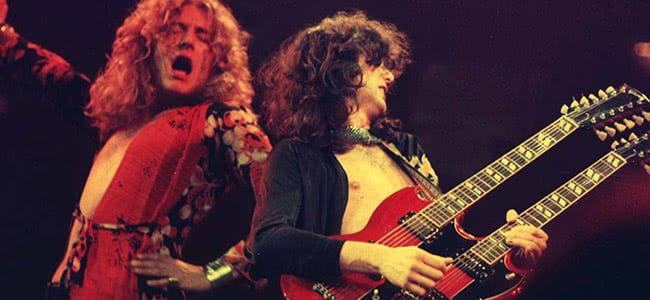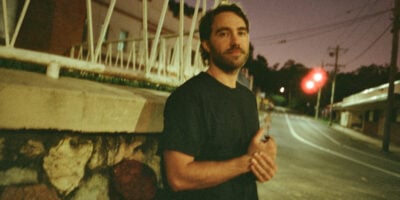Not only was 1975’s Physical Graffiti far from cynical or lazy, many consider the album to be the band’s finest hour and bear their crowning achievement.
For most bands, releasing an album made up of only eight original tracks and leaving the rest of the running time to be taken up by unused cuts from previous recording sessions looks like a lazy and cynical cash-grab.
But it goes without saying that Led Zeppelin were not like most bands.
We’re talking, of course, about ‘Kashmir’, the tune that for many sums up what made Led Zeppelin so great – epic soundscapes, head-banging riffs, muscular percussion, fantastical lyrics, and a sense that you were preparing for some sort of great battle.
Zeppelin lore suggests that there are demo versions of ‘Kashmir’, which in its nascent stages was titled ‘Swan Song’, that stretch for up 58 minutes long, though Jimmy Page, guitarist and producer of Physical Graffiti disputes this.
“Nah,” he would later tell Mojo. “But it was long.” Armed with the newfound freedom afforded by a double album, the band went hog wild, creatively speaking, veering in and out of genres and creating what author Dave Lewis called an “embarrassment of riches”.
But the album wasn’t originally conceived of as the treasure trove it became. Initial recording sessions took place in November 1973 at Headley Grange in East Hampshire. The sessions were quickly halted and the studio time given to Bad Company.
According to Lewis, bassist John Paul Jones, weary from the band’s herculean touring schedules and promotional commitments, decided he wanted to quit the band and take up a position as choirmaster at Winchester Cathedral.
After Jones changed his mind, the band recorded eight tracks at Headley Grange in January and February 1974, which they soon found stretched the running time of a typical LP. The band came to the decision to include unreleased tracks from other sessions.
“We had more material than the required 40-odd minutes for one album,” Page told Trouser Press. “We had enough material for one and a half LPs, so we figured let’s put out a double and use some of the material we had done previously but never released.”
“It seemed like a good time to do that sort of thing, release tracks like ‘Boogie With Stu’ which we normally wouldn’t be able to do… [T]his time we figured it was better to stretch out than to leave off.”
After the addition of some final overdubs and the conclusion of mixing, Page came up with the title Physical Graffiti to illustrate the physical and written energy that had gone into producing the album.
Not exactly critical darlings during their time (though you wouldn’t know it to read Rolling Stone these days), the album was released to a surprising amount of acclaim, with many critics suspecting the album to be Zeppelin’s vie for artistic credibility.
Looking back on the album, it still stands as arguably the band’s best. Sure, Led Zeppelin was a ferocious crack of thunder that signalled the dawn of a new era, Zeppelin II had ‘Whole Lotta Love’, III had ‘Immigrant Song’, IV ‘Stairway To Heaven’, and Houses of the Holy ‘No Quarter’.
But Physical Graffiti was Physical Graffiti, a single continuous work that’s bigger than the sum of its parts, which reached previously unfathomed realms of imagination for a band once dismissed by critics as simple-minded cock rock.
Fans and critics alike argue to this day whether it’s the band’s Sgt Pepper’s or their White Album, but the truth is that it’s neither. Physical Graffiti is Led Zeppelin, pure and unabashed and at their peak.

































